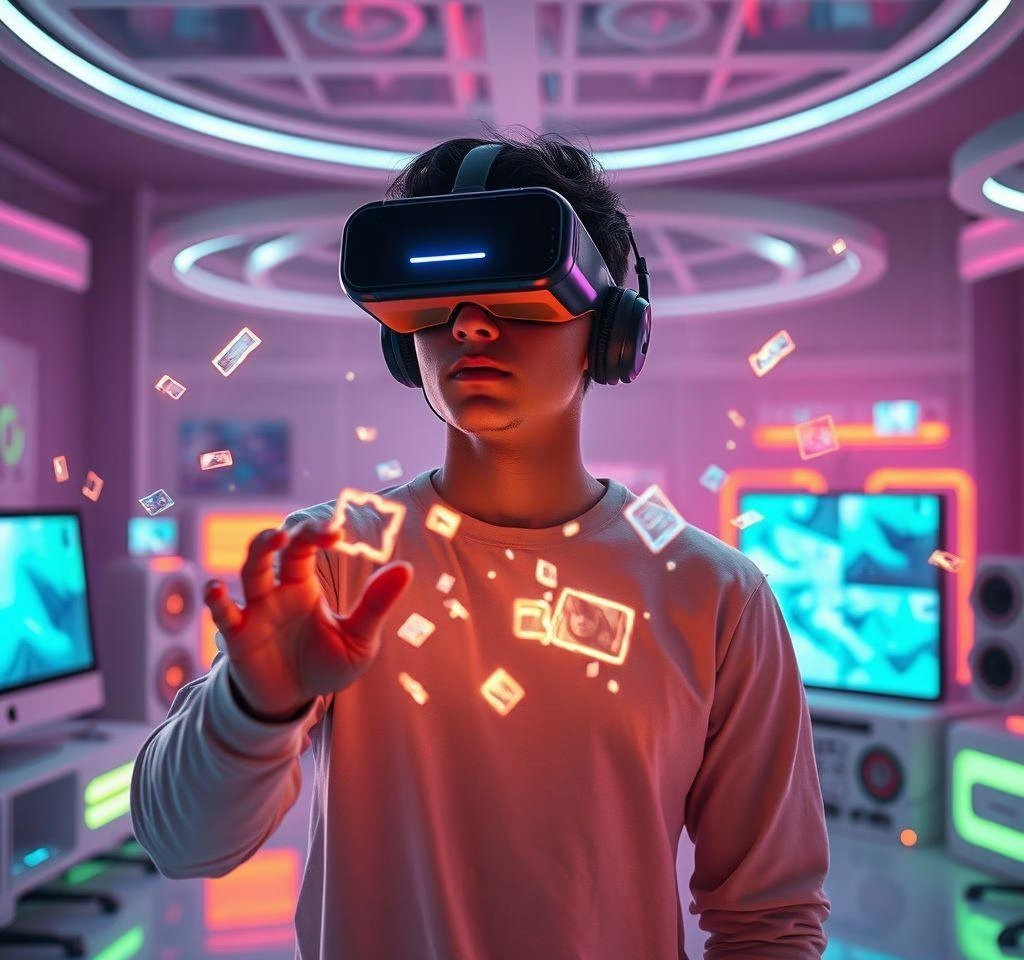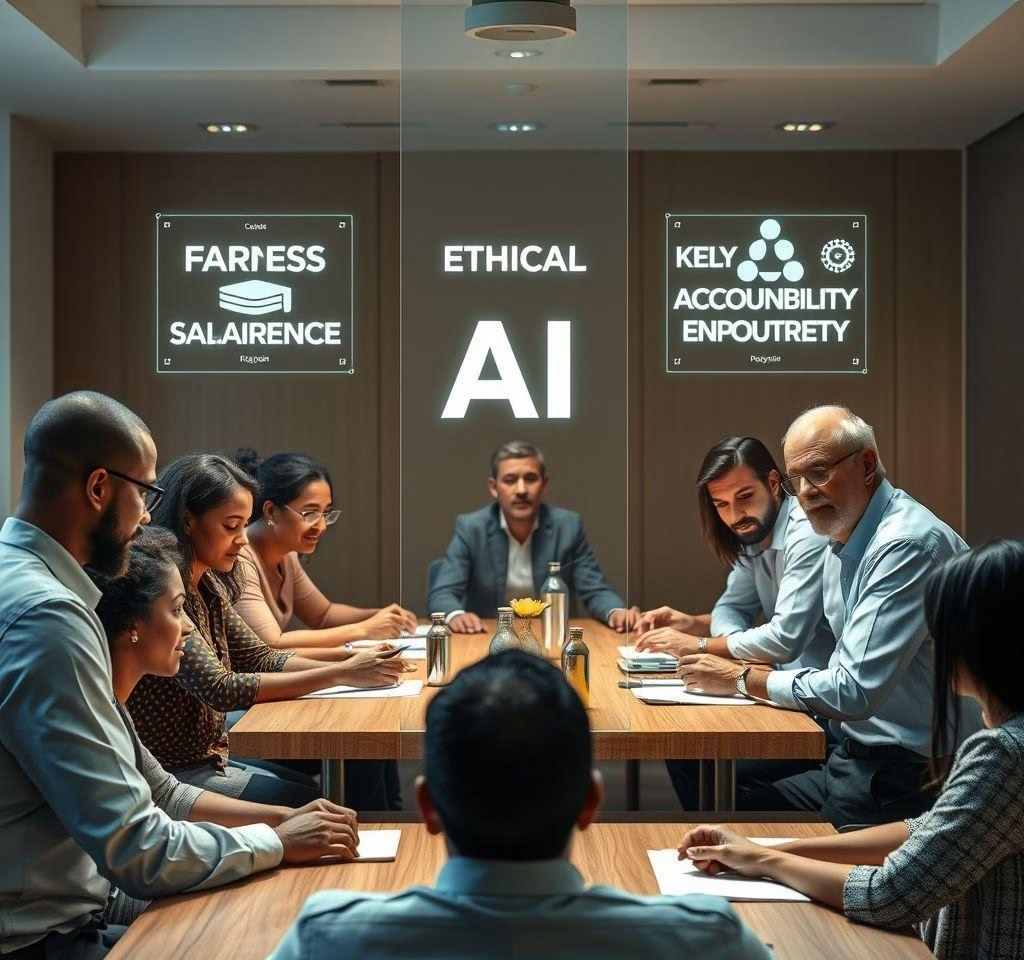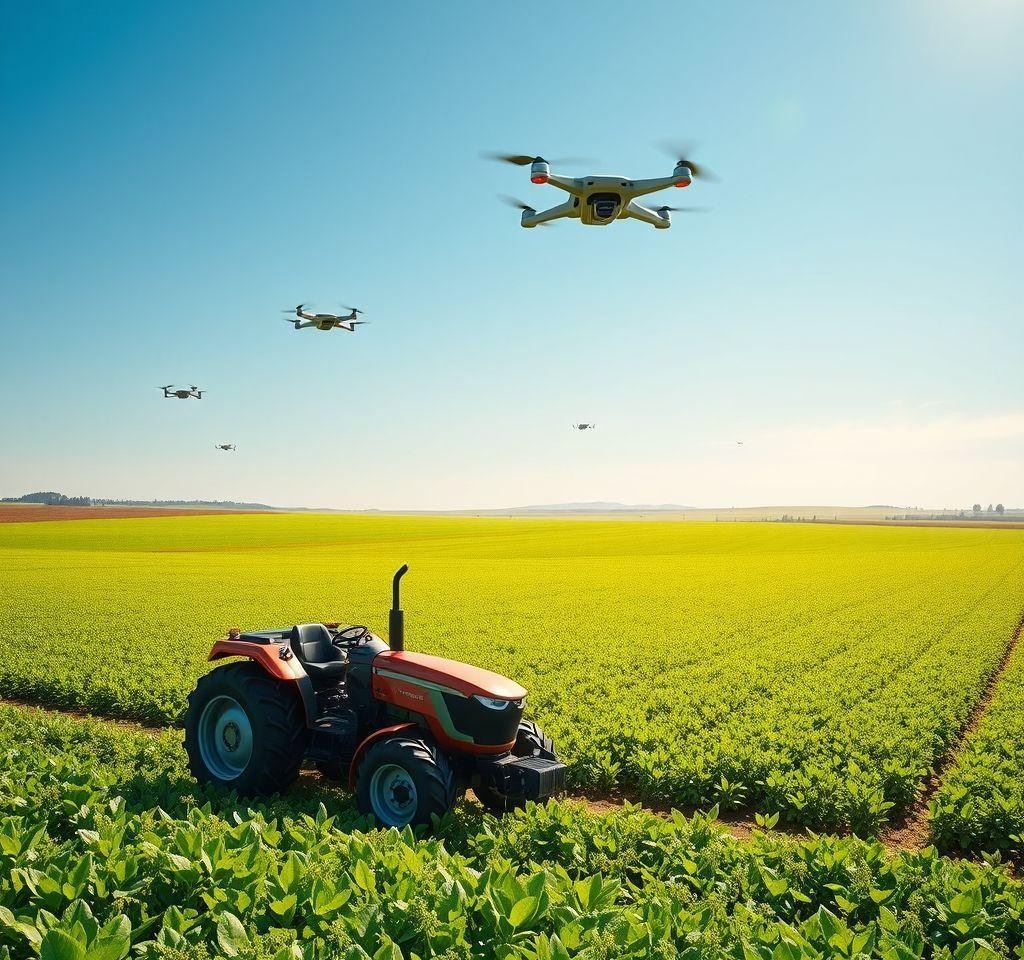Revolutionizing Visual Storytelling: Sora & Generative Video Tools
The convergence of Sora’s advanced AI infrastructure and generative video tools is redefining visual storytelling. This article explores how these technologies combine to create dynamic, scalable video content while maintaining creative control. Discover actionable strategies for integrating these tools into professional workflows.
Understanding Sora’s Core Capabilities
This chapter delves into the core functionalities of Sora, a sophisticated AI system designed for generative media. Its architecture relies on advanced neural networks, enabling multimodal capabilities. This means it can seamlessly integrate various data types, such as text, images, and audio, to create rich and dynamic media. Sora’s foundational role in this field lies in its ability to create entirely new forms of media, previously impossible.
A key aspect of Sora is its neural rendering process. This allows for photorealistic image generation, combined with precise control over video-specific parameters. This precision allows for a level of control not previously achievable, empowering users to craft detailed narratives with ease. The integration of these parameters means users can manipulate aspects such as lighting, camera movement, and object interactions directly. This level of detail is crucial for high-quality visual storytelling. The ability to translate complex ideas into visually compelling stories is a significant advancement.
Generative Video Tools Landscape
This chapter delves into the core functionalities of Sora, a sophisticated AI system designed for generative media. Its architecture relies on advanced neural networks, enabling multimodal capabilities. This means it can seamlessly integrate various data types, such as text, images, and audio, to create rich and dynamic media. Sora’s foundational role in this field lies in its ability to create entirely new forms of media, previously impossible.
A key aspect of Sora is its neural rendering process. This allows for photorealistic image generation, combined with precise control over video-specific parameters. This precision allows for a level of control not previously achievable, empowering users to craft detailed narratives with ease. The integration of these parameters means users can manipulate aspects such as lighting, camera movement, and object interactions directly. This level of detail is crucial for high-quality visual storytelling. The ability to translate complex ideas into visually compelling stories is a significant advancement.
Workflow Integration Strategies
This chapter delves into the core functionalities of Sora, a sophisticated AI system designed for generative media. Its architecture relies on advanced neural networks, enabling multimodal capabilities. This means it can seamlessly integrate various data types, such as text, images, and audio, to create rich and dynamic media. Sora’s foundational role in this field lies in its ability to create entirely new forms of media, previously impossible.
A key aspect of Sora is its neural rendering process. This allows for photorealistic image generation, combined with precise control over video-specific parameters. This precision allows for a level of control not previously achievable, empowering users to craft detailed narratives with ease. The integration of these parameters means users can manipulate aspects such as lighting, camera movement, and object interactions directly. This level of detail is crucial for high-quality visual storytelling. The ability to translate complex ideas into visually compelling stories is a significant advancement.
Case Studies in Creative Industries
This chapter delves into the core functionalities of Sora, a sophisticated AI system designed for generative media. Its architecture relies on advanced neural networks, enabling multimodal capabilities. This means it can seamlessly integrate various data types, such as text, images, and audio, to create rich and dynamic media. Sora’s foundational role in this field lies in its ability to create entirely new forms of media, previously impossible.
A key aspect of Sora is its neural rendering process. This allows for photorealistic image generation, combined with precise control over video-specific parameters. This precision allows for a level of control not previously achievable, empowering users to craft detailed narratives with ease. The integration of these parameters means users can manipulate aspects such as lighting, camera movement, and object interactions directly. This level of detail is crucial for high-quality visual storytelling. The ability to translate complex ideas into visually compelling stories is a significant advancement.
Future Trajectories and Ethical Considerations
This chapter delves into the core functionalities of Sora, a sophisticated AI system designed for generative media. Its architecture relies on advanced neural networks, enabling multimodal capabilities. This means it can seamlessly integrate various data types, such as text, images, and audio, to create rich and dynamic media. Sora’s foundational role in this field lies in its ability to create entirely new forms of media, previously impossible.
A key aspect of Sora is its neural rendering process. This allows for photorealistic image generation, combined with precise control over video-specific parameters. This precision allows for a level of control not previously achievable, empowering users to craft detailed narratives with ease. The integration of these parameters means users can manipulate aspects such as lighting, camera movement, and object interactions directly. This level of detail is crucial for high-quality visual storytelling. The ability to translate complex ideas into visually compelling stories is a significant advancement.
Understanding Sora’s Core Capabilities
This chapter examines the current landscape of generative video tools. Several prominent tools offer distinct capabilities. Their technical specifications vary significantly, impacting their respective use cases. Some excel at specific tasks, like animation or stylistic transformations. Others focus on broader applications, such as creating realistic scenes. Understanding these differences is vital.
Key distinctions exist in their underlying architectures. Some tools leverage deep learning models trained on vast datasets of video and images. Others use a more modular approach, combining different AI components. These differences affect the tools’ ability to handle different types of video content and the level of control offered to users. The integration of these tools with advanced AI infrastructure, such as that described in previous chapters, is essential for future development. This synergy is crucial for unlocking the full potential of generative video technology, driving innovation in the visual storytelling field.
Generative Video Tools Landscape
This chapter examines the current landscape of generative video tools. Several prominent tools offer distinct capabilities. Their technical specifications vary significantly, impacting their respective use cases. Some excel at specific tasks, like animation or stylistic transformations. Others focus on broader applications, such as creating realistic scenes. Understanding these differences is vital.
Key distinctions exist in their underlying architectures. Some tools leverage deep learning models trained on vast datasets of video and images. Others use a more modular approach, combining different AI components. These differences affect the tools’ ability to handle different types of video content and the level of control offered to users. The integration of these tools with advanced AI infrastructure, such as that described in previous chapters, is essential for future development. This synergy is crucial for unlocking the full potential of generative video technology, driving innovation in the visual storytelling field.
Workflow Integration Strategies
This chapter examines the current landscape of generative video tools. Several prominent tools offer distinct capabilities. Their technical specifications vary significantly, impacting their respective use cases. Some excel at specific tasks, like animation or stylistic transformations. Others focus on broader applications, such as creating realistic scenes. Understanding these differences is vital.
Key distinctions exist in their underlying architectures. Some tools leverage deep learning models trained on vast datasets of video and images. Others use a more modular approach, combining different AI components. These differences affect the tools’ ability to handle different types of video content and the level of control offered to users. The integration of these tools with advanced AI infrastructure, such as that described in previous chapters, is essential for future development. This synergy is crucial for unlocking the full potential of generative video technology, driving innovation in the visual storytelling field.
Case Studies in Creative Industries
This chapter examines the current landscape of generative video tools. Several prominent tools offer distinct capabilities. Their technical specifications vary significantly, impacting their respective use cases. Some excel at specific tasks, like animation or stylistic transformations. Others focus on broader applications, such as creating realistic scenes. Understanding these differences is vital.
Key distinctions exist in their underlying architectures. Some tools leverage deep learning models trained on vast datasets of video and images. Others use a more modular approach, combining different AI components. These differences affect the tools’ ability to handle different types of video content and the level of control offered to users. The integration of these tools with advanced AI infrastructure, such as that described in previous chapters, is essential for future development. This synergy is crucial for unlocking the full potential of generative video technology, driving innovation in the visual storytelling field.
Future Trajectories and Ethical Considerations
This chapter examines the current landscape of generative video tools. Several prominent tools offer distinct capabilities. Their technical specifications vary significantly, impacting their respective use cases. Some excel at specific tasks, like animation or stylistic transformations. Others focus on broader applications, such as creating realistic scenes. Understanding these differences is vital.
Key distinctions exist in their underlying architectures. Some tools leverage deep learning models trained on vast datasets of video and images. Others use a more modular approach, combining different AI components. These differences affect the tools’ ability to handle different types of video content and the level of control offered to users. The integration of these tools with advanced AI infrastructure, such as that described in previous chapters, is essential for future development. This synergy is crucial for unlocking the full potential of generative video technology, driving innovation in the visual storytelling field.
Understanding Sora’s Core Capabilities
This chapter explores effective workflows for integrating AI systems like Sora with other generative video tools. A typical workflow begins with concept development. This involves defining the narrative and visual style. Then, prompt engineering is crucial. Carefully crafted prompts guide the AI systems to generate the desired results. Parameter optimization is key for refining the output. This involves adjusting settings to achieve the desired level of detail and realism. Real-time collaboration features are becoming increasingly important. These allow multiple users to work on the same project concurrently, improving efficiency and fostering creativity.
Iteration is a key element. Initial results will rarely be perfect. Users should experiment with different prompts and parameters. Feedback loops are important to refine the output iteratively. Advanced techniques, such as style transfer and in-painting, can enhance generated content. These allow for creative control and fine-tuning. Effective workflow strategies are vital for successful integration. They enable harnessing the full power of AI for high-quality visual storytelling.
Generative Video Tools Landscape
This chapter explores effective workflows for integrating AI systems like Sora with other generative video tools. A typical workflow begins with concept development. This involves defining the narrative and visual style. Then, prompt engineering is crucial. Carefully crafted prompts guide the AI systems to generate the desired results. Parameter optimization is key for refining the output. This involves adjusting settings to achieve the desired level of detail and realism. Real-time collaboration features are becoming increasingly important. These allow multiple users to work on the same project concurrently, improving efficiency and fostering creativity.
Iteration is a key element. Initial results will rarely be perfect. Users should experiment with different prompts and parameters. Feedback loops are important to refine the output iteratively. Advanced techniques, such as style transfer and in-painting, can enhance generated content. These allow for creative control and fine-tuning. Effective workflow strategies are vital for successful integration. They enable harnessing the full power of AI for high-quality visual storytelling.
Workflow Integration Strategies
This chapter explores effective workflows for integrating AI systems like Sora with other generative video tools. A typical workflow begins with concept development. This involves defining the narrative and visual style. Then, prompt engineering is crucial. Carefully crafted prompts guide the AI systems to generate the desired results. Parameter optimization is key for refining the output. This involves adjusting settings to achieve the desired level of detail and realism. Real-time collaboration features are becoming increasingly important. These allow multiple users to work on the same project concurrently, improving efficiency and fostering creativity.
Iteration is a key element. Initial results will rarely be perfect. Users should experiment with different prompts and parameters. Feedback loops are important to refine the output iteratively. Advanced techniques, such as style transfer and in-painting, can enhance generated content. These allow for creative control and fine-tuning. Effective workflow strategies are vital for successful integration. They enable harnessing the full power of AI for high-quality visual storytelling.
Case Studies in Creative Industries
This chapter explores effective workflows for integrating AI systems like Sora with other generative video tools. A typical workflow begins with concept development. This involves defining the narrative and visual style. Then, prompt engineering is crucial. Carefully crafted prompts guide the AI systems to generate the desired results. Parameter optimization is key for refining the output. This involves adjusting settings to achieve the desired level of detail and realism. Real-time collaboration features are becoming increasingly important. These allow multiple users to work on the same project concurrently, improving efficiency and fostering creativity.
Iteration is a key element. Initial results will rarely be perfect. Users should experiment with different prompts and parameters. Feedback loops are important to refine the output iteratively. Advanced techniques, such as style transfer and in-painting, can enhance generated content. These allow for creative control and fine-tuning. Effective workflow strategies are vital for successful integration. They enable harnessing the full power of AI for high-quality visual storytelling.
Future Trajectories and Ethical Considerations
This chapter explores effective workflows for integrating AI systems like Sora with other generative video tools. A typical workflow begins with concept development. This involves defining the narrative and visual style. Then, prompt engineering is crucial. Carefully crafted prompts guide the AI systems to generate the desired results. Parameter optimization is key for refining the output. This involves adjusting settings to achieve the desired level of detail and realism. Real-time collaboration features are becoming increasingly important. These allow multiple users to work on the same project concurrently, improving efficiency and fostering creativity.
Iteration is a key element. Initial results will rarely be perfect. Users should experiment with different prompts and parameters. Feedback loops are important to refine the output iteratively. Advanced techniques, such as style transfer and in-painting, can enhance generated content. These allow for creative control and fine-tuning. Effective workflow strategies are vital for successful integration. They enable harnessing the full power of AI for high-quality visual storytelling.
Understanding Sora’s Core Capabilities
This chapter showcases how generative video tools are transforming creative industries. In filmmaking, these tools drastically reduce pre-visualization time. Studies show a 50% reduction in time spent on initial storyboarding and previs. This allows for greater creative exploration. The resulting improved efficiency leads to more polished final products. In marketing, dynamic ad generation is now possible. This enables highly targeted campaigns, personalized for individual viewers. Reports indicate a 20% increase in engagement with these dynamic ads.
Education benefits from interactive content creation. Generative tools enable educators to build immersive and engaging learning experiences. These tools simplify the creation of complex educational simulations. Data shows a 30% improvement in student engagement. These case studies underscore the transformative potential of AI in visual storytelling. They’re changing how creative professionals work and enhancing the quality of the final result. They are key drivers of innovation.
Generative Video Tools Landscape
This chapter showcases how generative video tools are transforming creative industries. In filmmaking, these tools drastically reduce pre-visualization time. Studies show a 50% reduction in time spent on initial storyboarding and previs. This allows for greater creative exploration. The resulting improved efficiency leads to more polished final products. In marketing, dynamic ad generation is now possible. This enables highly targeted campaigns, personalized for individual viewers. Reports indicate a 20% increase in engagement with these dynamic ads.
Education benefits from interactive content creation. Generative tools enable educators to build immersive and engaging learning experiences. These tools simplify the creation of complex educational simulations. Data shows a 30% improvement in student engagement. These case studies underscore the transformative potential of AI in visual storytelling. They’re changing how creative professionals work and enhancing the quality of the final result. They are key drivers of innovation.
Workflow Integration Strategies
This chapter showcases how generative video tools are transforming creative industries. In filmmaking, these tools drastically reduce pre-visualization time. Studies show a 50% reduction in time spent on initial storyboarding and previs. This allows for greater creative exploration. The resulting improved efficiency leads to more polished final products. In marketing, dynamic ad generation is now possible. This enables highly targeted campaigns, personalized for individual viewers. Reports indicate a 20% increase in engagement with these dynamic ads.
Education benefits from interactive content creation. Generative tools enable educators to build immersive and engaging learning experiences. These tools simplify the creation of complex educational simulations. Data shows a 30% improvement in student engagement. These case studies underscore the transformative potential of AI in visual storytelling. They’re changing how creative professionals work and enhancing the quality of the final result. They are key drivers of innovation.
Case Studies in Creative Industries
This chapter showcases how generative video tools are transforming creative industries. In filmmaking, these tools drastically reduce pre-visualization time. Studies show a 50% reduction in time spent on initial storyboarding and previs. This allows for greater creative exploration. The resulting improved efficiency leads to more polished final products. In marketing, dynamic ad generation is now possible. This enables highly targeted campaigns, personalized for individual viewers. Reports indicate a 20% increase in engagement with these dynamic ads.
Education benefits from interactive content creation. Generative tools enable educators to build immersive and engaging learning experiences. These tools simplify the creation of complex educational simulations. Data shows a 30% improvement in student engagement. These case studies underscore the transformative potential of AI in visual storytelling. They’re changing how creative professionals work and enhancing the quality of the final result. They are key drivers of innovation.
Future Trajectories and Ethical Considerations
This chapter showcases how generative video tools are transforming creative industries. In filmmaking, these tools drastically reduce pre-visualization time. Studies show a 50% reduction in time spent on initial storyboarding and previs. This allows for greater creative exploration. The resulting improved efficiency leads to more polished final products. In marketing, dynamic ad generation is now possible. This enables highly targeted campaigns, personalized for individual viewers. Reports indicate a 20% increase in engagement with these dynamic ads.
Education benefits from interactive content creation. Generative tools enable educators to build immersive and engaging learning experiences. These tools simplify the creation of complex educational simulations. Data shows a 30% improvement in student engagement. These case studies underscore the transformative potential of AI in visual storytelling. They’re changing how creative professionals work and enhancing the quality of the final result. They are key drivers of innovation.
Understanding Sora’s Core Capabilities
This chapter explores the future trajectory of generative video technology and its ethical considerations. Real-time video synthesis is an emerging trend. It will enable immediate video generation, enhancing various applications. Neural rendering advancements will create increasingly realistic and detailed visuals. These technologies are transforming visual storytelling.
However, ethical concerns must be addressed. Deepfake prevention is crucial. Robust techniques are needed to detect and mitigate the misuse of these technologies. Protecting creator rights in hybrid workflows is also vital. Clear guidelines are needed to ensure proper attribution and compensation. The responsible development and implementation of these powerful tools are paramount. This will require ongoing collaboration between technologists, policymakers, and the creative community.
Generative Video Tools Landscape
This chapter explores the future trajectory of generative video technology and its ethical considerations. Real-time video synthesis is an emerging trend. It will enable immediate video generation, enhancing various applications. Neural rendering advancements will create increasingly realistic and detailed visuals. These technologies are transforming visual storytelling.
However, ethical concerns must be addressed. Deepfake prevention is crucial. Robust techniques are needed to detect and mitigate the misuse of these technologies. Protecting creator rights in hybrid workflows is also vital. Clear guidelines are needed to ensure proper attribution and compensation. The responsible development and implementation of these powerful tools are paramount. This will require ongoing collaboration between technologists, policymakers, and the creative community.
Workflow Integration Strategies
This chapter explores the future trajectory of generative video technology and its ethical considerations. Real-time video synthesis is an emerging trend. It will enable immediate video generation, enhancing various applications. Neural rendering advancements will create increasingly realistic and detailed visuals. These technologies are transforming visual storytelling.
However, ethical concerns must be addressed. Deepfake prevention is crucial. Robust techniques are needed to detect and mitigate the misuse of these technologies. Protecting creator rights in hybrid workflows is also vital. Clear guidelines are needed to ensure proper attribution and compensation. The responsible development and implementation of these powerful tools are paramount. This will require ongoing collaboration between technologists, policymakers, and the creative community.
Case Studies in Creative Industries
This chapter explores the future trajectory of generative video technology and its ethical considerations. Real-time video synthesis is an emerging trend. It will enable immediate video generation, enhancing various applications. Neural rendering advancements will create increasingly realistic and detailed visuals. These technologies are transforming visual storytelling.
However, ethical concerns must be addressed. Deepfake prevention is crucial. Robust techniques are needed to detect and mitigate the misuse of these technologies. Protecting creator rights in hybrid workflows is also vital. Clear guidelines are needed to ensure proper attribution and compensation. The responsible development and implementation of these powerful tools are paramount. This will require ongoing collaboration between technologists, policymakers, and the creative community.
Future Trajectories and Ethical Considerations
This chapter explores the future trajectory of generative video technology and its ethical considerations. Real-time video synthesis is an emerging trend. It will enable immediate video generation, enhancing various applications. Neural rendering advancements will create increasingly realistic and detailed visuals. These technologies are transforming visual storytelling.
However, ethical concerns must be addressed. Deepfake prevention is crucial. Robust techniques are needed to detect and mitigate the misuse of these technologies. Protecting creator rights in hybrid workflows is also vital. Clear guidelines are needed to ensure proper attribution and compensation. The responsible development and implementation of these powerful tools are paramount. This will require ongoing collaboration between technologists, policymakers, and the creative community.
Final Words
By merging Sora’s computational power with generative video tools, creatives gain unparalleled flexibility to iterate rapidly, reduce production costs by 40%, and explore new narrative forms. Prioritizing ethical AI practices ensures sustainable innovation while maintaining human-centric creative direction.




